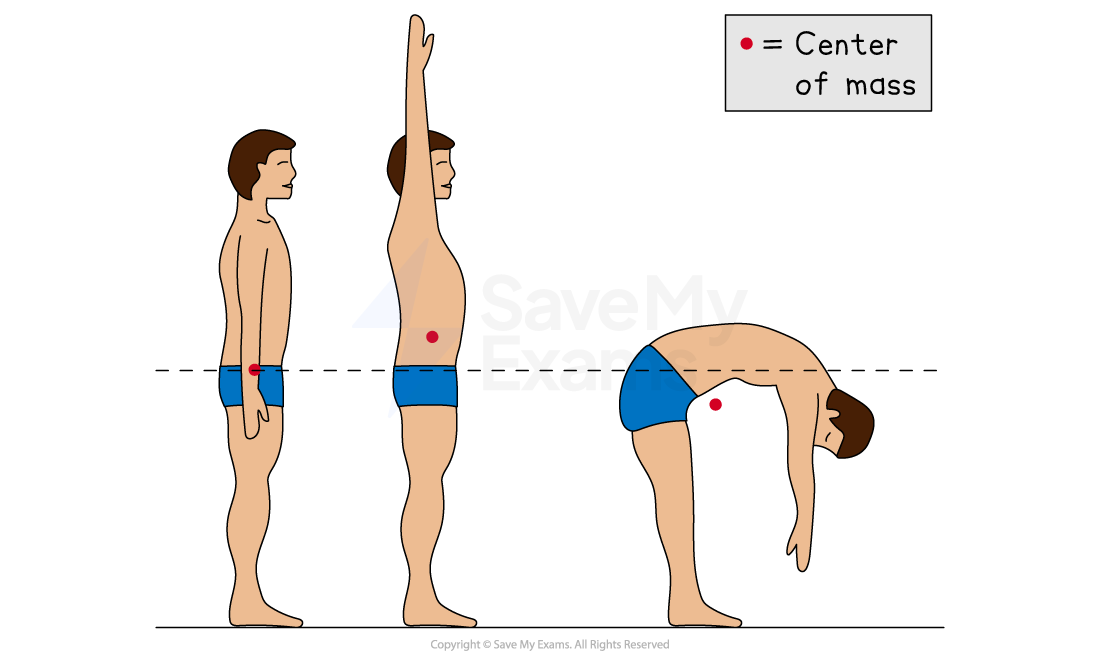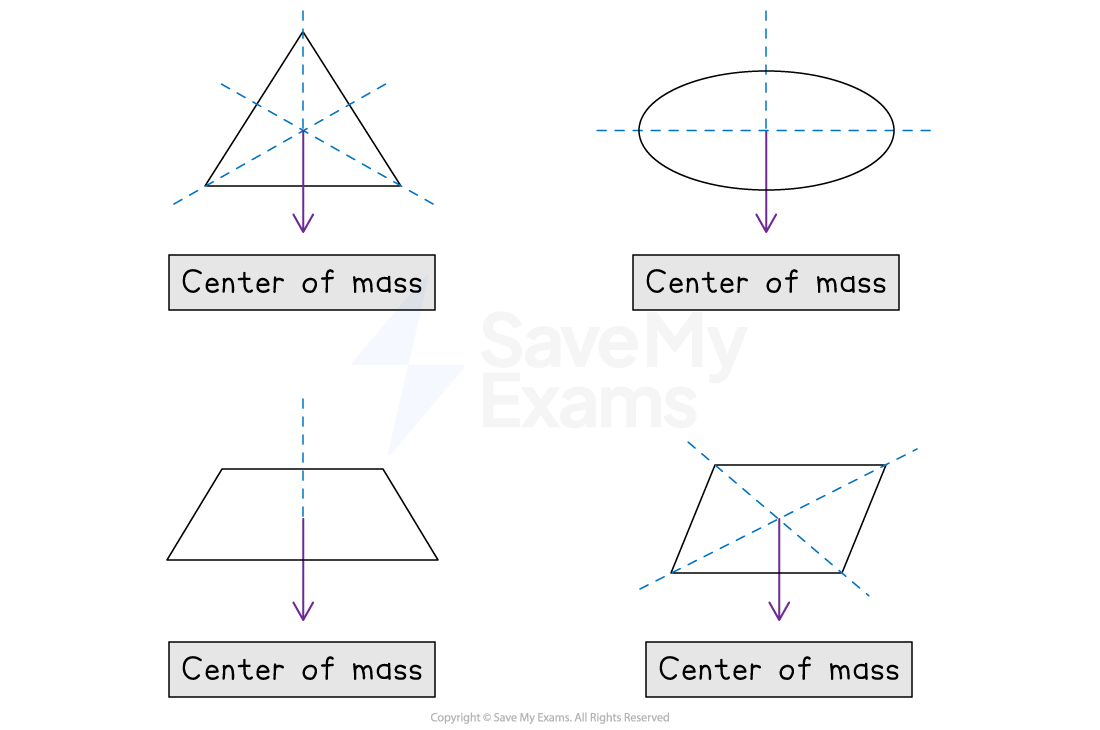Center of Mass (College Board AP® Physics 1: Algebra-Based): Study Guide
Center of mass
The center of mass of a system is defined as:
The point where all of an object’s mass can be thought to be concentrated
When a system consists of a single object:
it can be modeled as a point particle that is located at the system's center of mass
all interactions can be considered to act at the system's center of mass

When a system consists of multiple objects:
each object can be modeled as a point particle, with an associated mass and position which contributes to the system's center of mass
interactions between objects within a system (i.e. internal forces) do not influence the motion of a system’s center of mass
Examiner Tips and Tricks
Remember, the center of mass is a hypothetical point, so it can lie inside or outside of a body. The center of mass of a non-rigid body can change depending on its shape. For example, a person’s center of mass is lower when learning forward than when standing upright

Locating center of mass
For systems with symmetrical mass distributions, the center of mass is located on lines of symmetry
Center of mass of a symmetrical object

The location of a system’s center of mass along a given axis can be calculated using the equation:
Where:
= position of the system's center of mass, in
= mass of each object, in
= position of each object, in
Calculating the center of mass of a 1D system
Consider a system of three objects located along the same line
The position of the system's center of mass can be determined using:
Position of the center of mass on a line

Calculating the center of mass of a 2D system
Consider a system of three objects located along the same x-y plane
The position of the system's center of mass can be determined using:
Where:
= position vector of the system's center of mass, in
= position vector of each particle, in
Position of the center of mass on an x-y plane

The positions of the separate x and y coordinates of the system's center of mass can be determined using:
Using Pythagoras' theorem, the magnitude of the position vector is:
Using trigonometry, the direction of the position vector can be found from:
Examiner Tips and Tricks
In AP Physics 1, you will only be expected to calculate the center of mass for systems of five or fewer particles arranged in a two-dimensional configuration or for highly symmetrical systems

Unlock more, it's free!
Did this page help you?